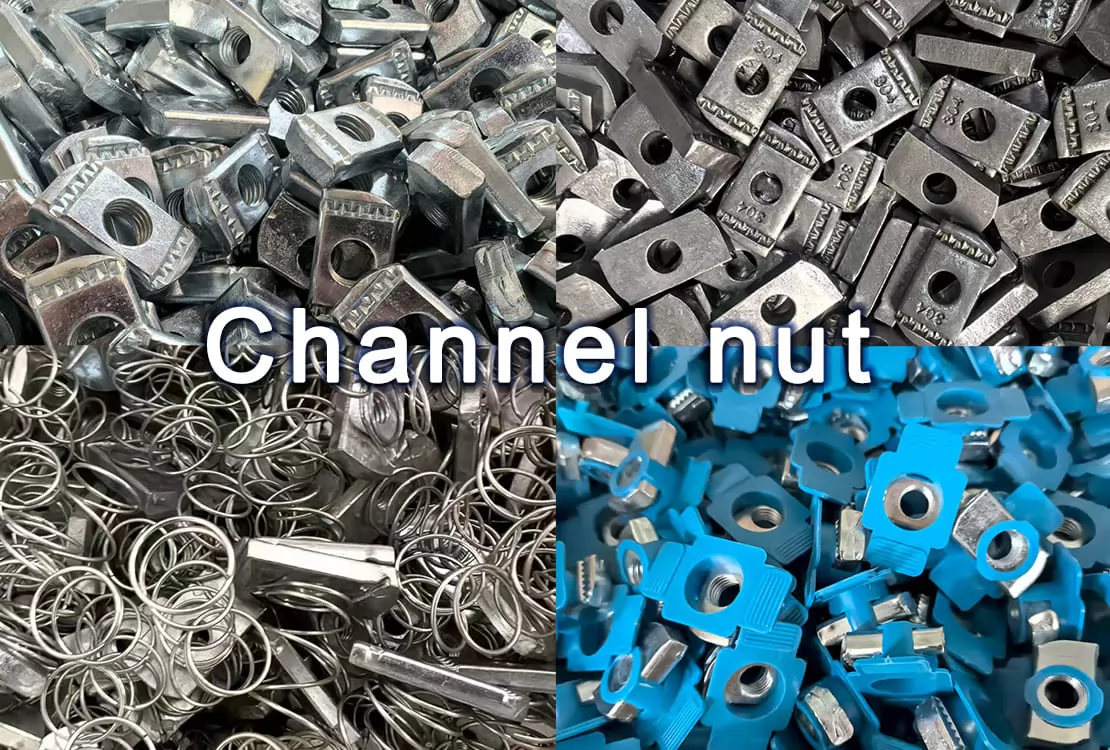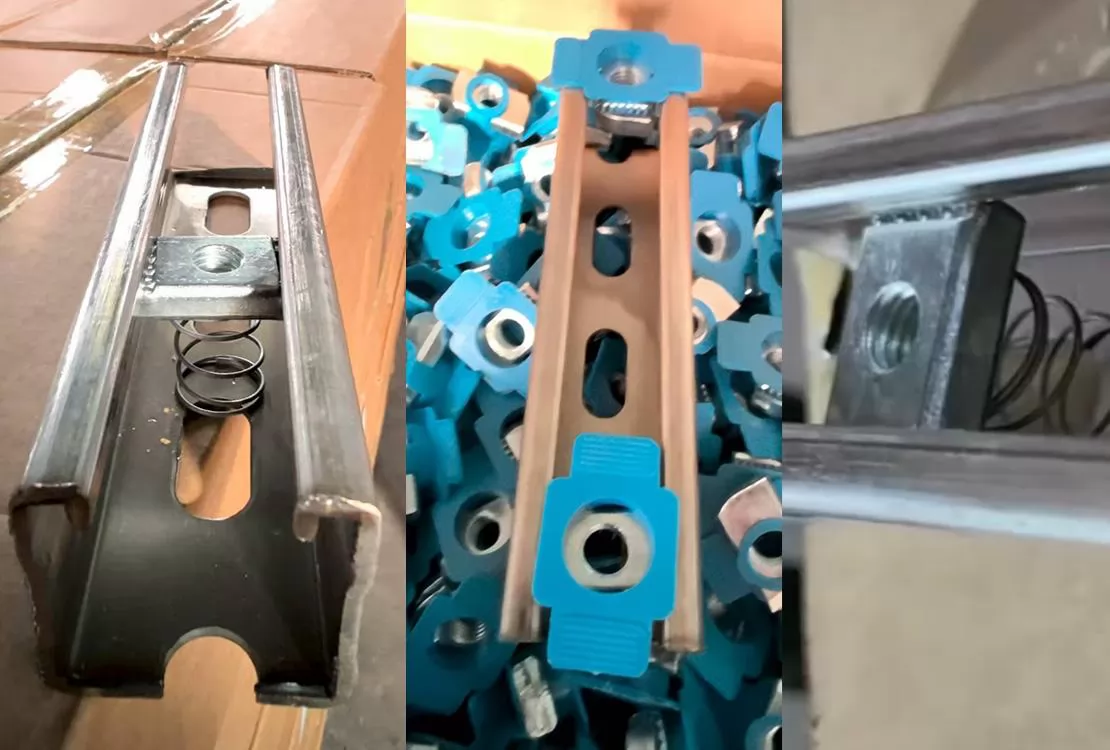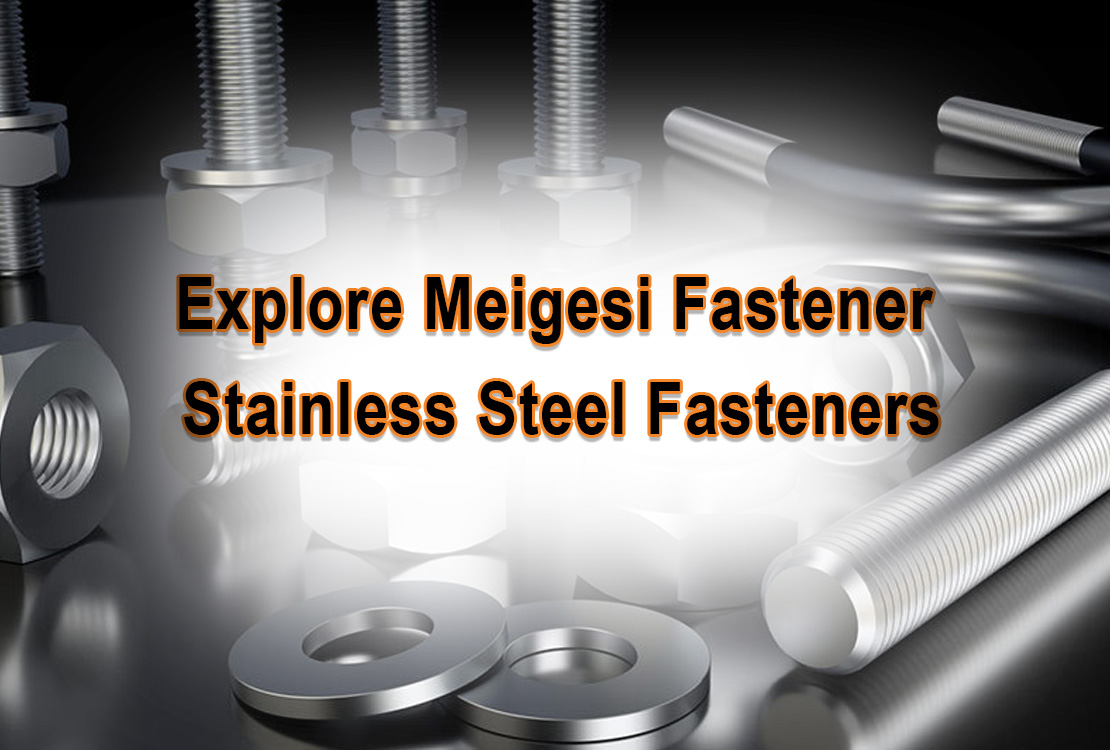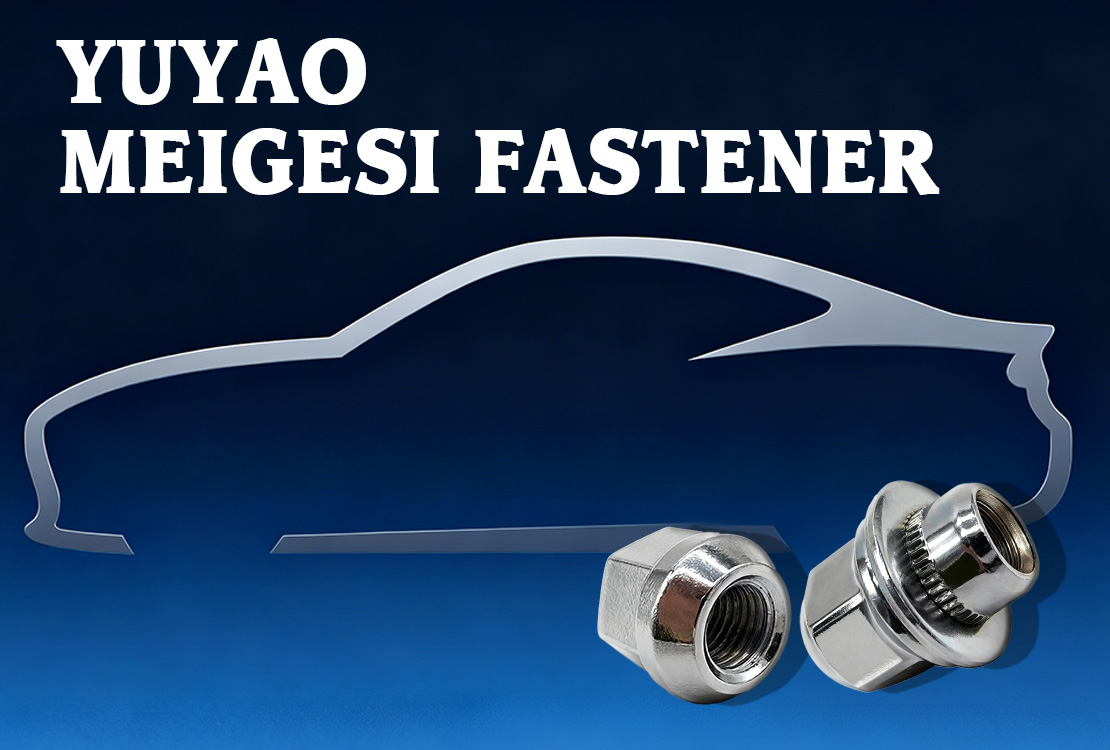

A channel nut (also commonly called a strut nut or spring channel nut) is a specific type of fastener designed to work with metal framing channels (“struts” or Unistrut-type channels). It consists of:
A rectangular or similarly shaped nut body that fits inside the channel profile.
A threaded hole to accept bolts or studs.
Grooves or serrated edges that can bite into the channel lips when tightened, preventing slipping.
Sometimes a spring attached to the nut (making it a spring channel nut) that helps hold the nut in place temporarily inside the channel until tightened.
The channel nut can also be derived into the Spring Channel Nut, Channel Nut With Plastic Holder and Regular Channel Nut. These products are usually used with C or U Steel Strut Channel.

Slide or insert the channel nut into the slot of the channel framing. If the nut has a spring (a spring or a spring-retainer), that helps hold it in place so it doesn’t slide back or move while you work.
Once in place, rotate the nut 90 degrees (clockwise usually) so the grooves/serrated teeth align with the inturned lips of the channel. This “turning” locks the nut in a crosswise orientation relative to the slot.
Position the component or fitting (bracket, panel, pipe clamp, etc.) over the channel, then insert a bolt (or threaded stud) through the fitting and thread it into the channel nut.
As you tighten the bolt, the serrated teeth press firmly against the channel lips. This creates a strong clamping force that prevents movement (slipping or loosening) under load or vibration. The force is distributed through the teeth into the metal of the channel lip, creating mechanical locking via friction and bite.
Nuts with springs are especially useful when positioning is difficult (e.g., overhead installations), because the spring holds the nut in place until the bolt is in and tight. Non-spring nuts work similarly once in position.
The shape, depth, and spacing of the grooves/serrations affect how well the nut grips, how much force is needed, and how resistant the connection is to vibration or loosening.
The springs or retaining tabs provide forces that keep the nut from sliding before tightening. These forces are partly perpendicular to the channel lips (pulling the nut slightly toward the lips), and partly parallel (frictional) to resist longitudinal sliding before tightening. In patented designs, additional components are arranged to resist rotation out of position until the bolt is turned.
|
Variant |
Feature |
Use / Benefit |
|---|---|---|
|
No-spring channel nut |
Just the basic nut body (no spring) |
Simpler, less expensive; used where holding in place isn’t difficult. |
|
Spring channel nut (bottom spring, top spring) |
Small spring attached to help position the nut inside the channel |
Saves time during assembly since the nut stays in place before the bolt is installed. |
|
E-Z nut / nylon cap / cone nut |
Use of plastic or nylon caps or shapes to help positioning or reduce noise or wear |
Sometimes preferred for light-duty or non-metallic environments. |
|
Heavy-duty or specialty material channel nuts |
Made of stainless steel, galvanized, or even fiberglass materials; designed for higher loads or harsh environments. |
|
Channel nuts are widely used wherever adjustable mounting inside channel or strut framing is needed. Some common applications:
Electrical systems (mounting conduit, cable trays)
HVAC (pipes, ventilation duct supports)
Mechanical / plumbing fixtures or piping support systems
Adjustable framing, shelving, and support structures where flexibility in positioning is advantageous
Highly adjustable: you can slide the nut along the channel and fix it where needed.
Good resistance to vibration and loosening, due to serrated edges and clamped contact with channel lips.
Easier installation, especially using spring versions: the spring can hold the nut in place, giving one free hand.
The load capacity depends on materials, thread size, channel size, and proper tightening torque. Overloading or under-tightening can reduce effectiveness.
Springs can sometimes catch on slots or slip through, depending on the channel design.
For highly corrosive or temperature-extreme environments, material choice (stainless, fiberglass, etc.) becomes very important.
The Channel Nut, with its unique locking mechanism, vibration resistance, and easy-to-install design, is an invisible weapon that supports stable connections in modern mechanical, electrical, and construction projects. When choosing a fastener supplier, quality and service are equally crucial—and this is precisely where Meigesi Fastener excels.
As a manufacturer specializing in standard fasteners, Meigesi Fastener has many years of industry experience. Its product range includes screws, bolts, nuts, washers, anchors, and more, meeting DIN, ISO, and ANSI standards as well as custom requirements.
If you're looking for reliable, durable, and technologically proven Channel Nuts or other fasteners, Meigesi is undoubtedly a trustworthy partner.
Contact us to learn about the various Channel Nut models and features, as well as Meigesi's advantages in materials, processes, and supply capabilities—making your project connections more stable and secure.













